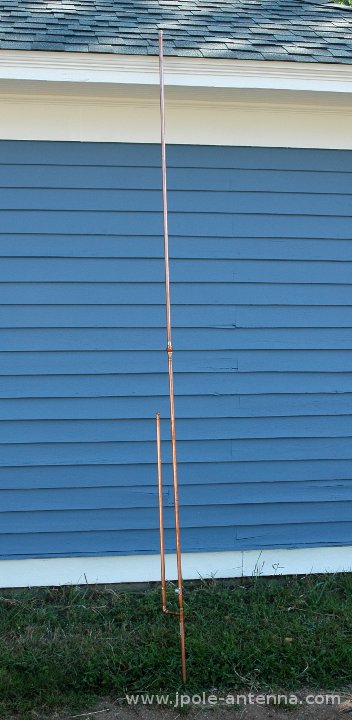We’ve all seen youtube videos. I know I’m in awe of those specular Christmas displays with the synchronised lights and music. Well if you want to create a synchronised holiday light display you’ll need a little imagination, a lot of hard work, and of course an FM radio transmitter and antenna. The first two items are up to you, but Light-o-Rama is a good place to start. As for the antenna, you are in the right place.
Do I really need an FM radio transmitter for my light display? You could get by with an amplifier and speakers, but unless you really like the music and have understanding neighbors, loudspeakers are really not an option. Wouldn’t be nicer if viewers could drive up the street, tune in their radio and hear the synchronised sound over their car audio system while watching the light display. There are several transmitters on the market, but for most residential users, an inexpensive .1 watt unit is enough to give you a couple of blocks of coverage.
FM Radio Transmitters
Ramsey Electronics is a popular source of FM transmitter kits and fully assembled transmitters. If you are an electronics hobbyist, building a kit like the FM-30B can be fun and rewarding. Otherwise the fully assembled and tested Ramsey FM35BWT is ready to go for your light display.
Another very popular FM transmitter kit is from EDM Electronics. The EDM Electronics EDM-LCD-CS-EP is a low cost FM transmitter kit with .1 watt of power. That doesn’t sound like much, but with a quality antenna it will give you enough range for a high quality signal throughout your neighborhood. These transmitters do feature a high stability PLL synthesized design for higher audio clarity and less frequency drift. EDM products are kits, so basic electronics knowledge is required, but the instructions are easy to understand and most people should be able to assemble the transmitter in a couple of evenings.
Flooding the market now are inexpensive Chinese import FM transmitters. Common are the CZH-05B FM broadcast transmitters. These have up to .5 watts of power although you’ll want to keep them at the low power setting to stay within the FCC Part 15 requirements. I don’t have any experience with these Chinese transmitters, they are inexpensive, so your mileage may vary.
FM Broadcast Antennas
The transmitter is only half the package for your synchronised light display audio. You will also need a good antenna. Some of these transmitters come with rubber duck or whip antennas. These antennas are designed to be small and compact, but are not a good choice if you want to get some range out of your transmitter. Plus getting a good signal also involves good antenna placement. If the antenna is directly connected to the back of the radio, you are going to end up dealing with a hashy signal and interference from neighboring devices. Put your antenna outside and away from the transmitter for a better, more reliable signal.
The FM Broadcast J-Pole antenna is an excellent choice for your FM broadcast transmitter. The half-wave design of the J-Pole antenna does not require a groundplane and it has an omnidirectional radiation pattern to provide a good signal from all directions. The antenna can be placed off to the side or behind your house on a short mast driven into the ground or attached to a fence or deck. After the holidays are over, the two piece design is easy to dissamble and store away for next year. The best part of this antenna is that there are no moving parts. All antennas come pretuned to your specific frequency and they will stay in tuned with no maintenance for years to come.
Connecting everything up
Since the FM Broadcast J-Pole is an external antenna, you will need coax feedline to connect the antenna to the transmitter. You will also need the appropriate adapters to connect the feedline to the transmitter. but the longer the feedline the higher the quality of coax you’ll need to minimize the signal loss. Radio Shack does sell RG-58 coax with pl-259 connectors on each end, but unless you only need 20 feet, this coax will have too much loss for low power FM broadcast transmitters. My recomendation for a 25-50 foot run would be RG-8U coax and the best choice for a 75 foot or longer run would be LMR-400 or Belden 9913. My favorite source for coax is The Wireman or Cable Experts. Local 2-way shops will also have coax on hand and may be able to sell small quantities.
Naturally our inclination is to position the transmitter close to the computer feeding the audio signal to it, but remember your highest quality signal will be achieved by putting the antenna outside and keeping your feedline run short. A better option is to keep the transmitter close to the antenna and run a longer audio cable from the computer to the transmitter.
The EDM unit is very small, so they use an RCA connector for RF output. You will need an RCA to SO-239 adapter. Radio Shack doesn’t carry the adapter you require, but they do have two adapters that will work inline: RCA (Phono) Male to BNC Female RS Part #278-250 and BNC female to PL-259 adapter RS Part #278-120.
Like I mentioned in the introduction, I love watching the synchronized holiday light displays on youtube. If you put together a synchronised display, drop me a line or leave a comment, I’d like to hear more on how you did it.


Recent Comments